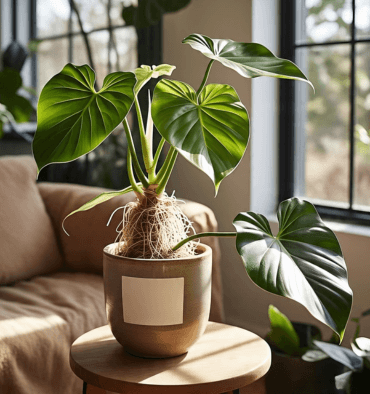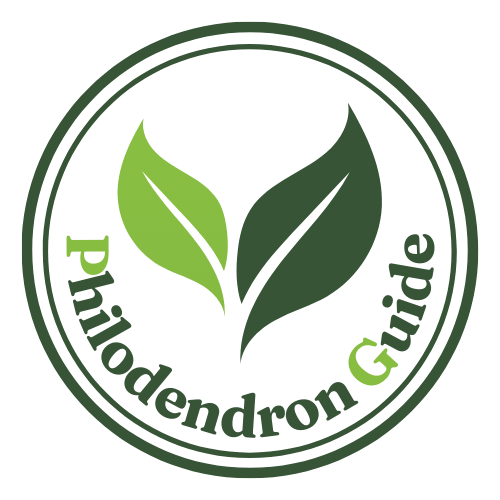Introduction:
Understanding Philodendron Light Needs

Philodendron Light Requirement should be carefully considered, as one of the most striking features about philodendrons is their beautiful green foliage and their ease of care which is why they are widely appreciated by people who keep plants indoors. Those plants, however, are not likely to survive without the appropriate light and so special attention should be paid on light conditions. Thus, how much light expectancy does a philodendron have and which type will be most beneficial? With Black Gorilla, our philodendron light requirements will be exposed fully, and operational tips will be highlighted to find out optimal conditions for the philodendrons.
What are Philodendron Plants?
Among the philodendron species, some originated in Central and South American rainforests, which are tropical regions. The beauty of philodendrons is in their green leaves but they come in different sizes and shapes hence suitable for both novice and expert plant lovers. These plants are not only beautiful but they are also quite strong that makes them even more attractive as house plants.
How Light Affects: Understanding Philodendron Light Requirement
Since light is utilized in the process that all plants require to produce energy, which is photosynthesis, then it is certainly one of the pillars for plant growth. For philodendrons, putting up with the right light enables them to grow strong, produce beautiful leaves and remain healthy. If philodendrons are not given enough light however, they become weak, leggy and lose their vibrant colors which affects their beauty and health.
Understanding the Natural Habitat and Philodendron Light Requirement
In their natural habitat, philodendrons climb larger trees in dense rainforests. Instead of receiving direct sunlight, they thrive under filtered light that passes through the canopy of surrounding trees. Knowing these facts orientates us when we want to build those conditions in our homes. It explains why philodendrons flourish in our rooms.
Best Light for Philodendron.
These plants enjoy bright sol light but ideally they grow well under bright diffused light. It is best to put them in bright light conditions but away from sunlight. Damage to leaves can occur if exposed to direct sun light as it may scorch their leaves but the same plants will do well in bright and indirect light.
Direct or Indirect: Philodendron Light Requirement
Philodendrons are more inclined to desiring indirect light rather than direct sunlight. Direct sunlight often becomes too hot, resulting in leaf burn. In this case, indirect light is good because it supplies enough energy without necessarily damaging the leaves. One can create indirect light by hanging a sheer curtain over the philodendron or by keeping it a little distance from the window.
Light Hours for Philodendron Light Requirement
6-8 hours of indirect sunlight per day is enough for the growth of Philodendrons. If less is provided, their growth may decrease and they may have smaller leaves that are also less green. They can endure a lower light level but this is not good for their growth.
Where Should Philodendron be Placed Indoors?
A philodendron’s most preferred location within the house is next to either an east or north-facing window. East-facing windows receive a little morning sun which is suitable for these plants. North-facing windows receive good but gentler light all day, thus making it another good site. If there are only south or west-facing windows, it is essential to place a net curtain on these windows to reduce available bright light.
Morning Light vs. Afternoon Light
The morning light is softer and less comprehensive in the range of its wavelengths than the afternoon light, which is beneficial for the philodendrons. In case there is an east window, the covering leaves of philodendron will enjoy warm rays of the sun in the morning. The afternoon sun, especially coming from the western window, can be too strong, and protecting the plant from its burning rays becomes necessary.
Using Artificial Lights for Philodendron
In case your house cannot provide enough natural light for the thriving of the philodendron, the use of artificial lights can be an option that will nurture the plant. The best option here would be the full-spectrum LED grow lights, as those imitate sunlight. Place the lamp 12–18 inches away from the philodendron and provide light for about 10–12 hours a day to support healthy growth.
How to Identify Light Problems in Philodendron
If there is too little or too much light for philodendrons, they will give signals. The leaves’ appearance changes when light is either less or more than optimal and this information can be used to come up with tests on the dosage of the light. A healthy philodendron has large glossy eyelike healthy leaves and the elongation of the stems between the leaves is not profound.
Signs of having light intolerance
When a philodendron receives too much light, the most common symptoms would be yellowing leaves, brown leaf spots, or leaf edges that may have gone scalded or crispy. This means that, unfortunately, this plant has excess light compared to what it can handle. In such instances, moving the plant to a place where there is light filtered to a certain extent, can save it from such.
Signs of having no light
Light also affects the philodendron. Its growth may be wanting, or gradual or it can produce microscopic or white leaves, or sprouts with extended spaces between the leaves meaning its stem is extravagantly long. The moment you see your plant leaning towards the light, you will know it is starving for more light.
Seasonal Light Ratios and Adjustments in Philodendron Light Requirement
Availability of sunlight is subject to seasonal variations, and as such, it is prudent to shift the position of your philodendron, whenever there are variations in the seasons. In the winter season for instance, light levels go lower and you may want to consider moving your plant nearer to a window or even using light bulbs. Summer on the other hand comes with more heat which brings fears of direct sun exposure, hence repositioning of the plant should be done if necessary.
Common Light-Related Mistakes and How to Avoid Them
One of the most common mistakes is placing philodendrons in direct sunlight which can then lead to leaf burn. Another mistake is forgetting to change the light conditions in the following seasons. It is important to always review the requirements of the plant being looked after and modify the conditions such that the proper amount of light is provided to the plant.
Tips to Ensure Your Philodendron Gets Enough Light
Place your philodendron near an east or north window for bright, indirect light. Use sheer curtains if direct sun is too strong, and rotate the pot every few weeks for even growth. In winter, supplement with grow lights if needed.
Key Takeaways:
-
Philodendrons thrive in bright, indirect light—avoid direct sun to prevent leaf damage.
-
Adjust care with seasonal changes and rotate the plant regularly.
-
Too much direct sunlight can harm the plant, so follow these tips for healthy growth.
1.Can philodendrons tolerate low light?
Yes, they can withstand less light than normal, but this phenomenon comes with growth stagnation.
2.What happens when my philodendron is exposed to direct sun?
This is a situation that shouldn’t occur. The chances of leaf burn and damage to the plant are increased
3.How many hours of light is required by a philodendron?
They need about 6-8 hours of bright, indirect light each day.
4.Am I able to provide electric light for my philodendron?
Yes, full-spectrum led grow lights will do in case natural light is supplemented.
5.What is the problem when the folds of a philodendron are turning yellow?
A yellow leaf may also be caused by too much sun or too little sun.
6.What kind of light can be offered to the philodendrons, is it morning light?
Yes, morning light happens to be less dull or less severe and thus is most preferable.
7.What is the procedure for determining that a philodendron is not getting enough sunlight?
The plant will tend to be slow growing, leggy or with short leaves.
8.Where should grow lamps be positioned relative to the philodendron?
12-18 inches should be maintained between the light source and the plant.
9.Do philodendrons need light during the winter months?
Yes, the plants do require light all year round even in winter.
10.Would philodendrons thrive under fluorescent lighting?
Yes, they will grow under fluorescent lights if there is a lack of natural light.
11.Is my philodendron supposed to be twisted from time to time so the growth will be even?
Yes, this should be done at least once every two weeks in order for all fronts to be proportionately luminescent.
12.Is it possible to put my philodendron close to a west-facing window?
Available yes, but cover it with sheers or curtains to tone down the bright afternoon sun.
13.What can I do to avoid my philodendron becoming leggy?
Keep it in bright indirect light, regular rotation would do good as well.
14.What can I do to modify light conditions according to the seasons?
Reposition the plant according to the window, or less use of it would also help.

